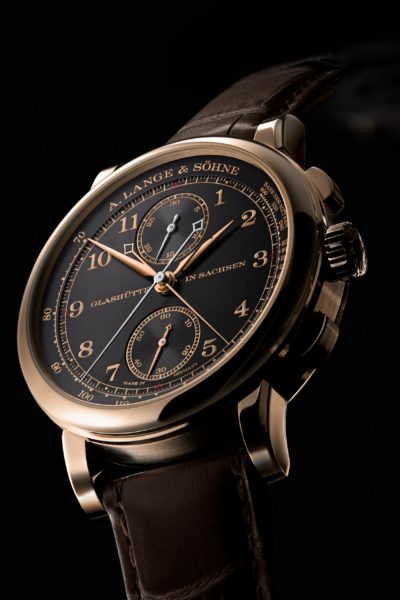“Complicated” is a word to describe any watch that does more than just tell time, and complications, the functions of the mechanical watches that more than just tell seconds, minutes, and hours and are frequently controlled by the pushers on the side of your watch aren’t as complicated as you may think. Here’s some of the most popular watch complications and what they do.
Date Display

The most popular type of display is the basic date window, which uses a single disc that rotates under the 3 o’clock aperture, displaying the date as a number from 1 to 31. However, the date can be displayed in a variety of ways, including on a small sub-dial above 6 o’clock, around the edge of the dial with a fourth hand pointing to the correct date number (a “pointer date”), or as a large digital-type display utilizing two disks at the top of the dial that rotate and display the numbers through an opening. The crown is frequently used to manually adjust the date display.
Moon Phase

The current phase of the moon is displayed on a moon phase indicator, which is usually a revolving disc featuring graphic depictions of the waxing, waning, full, or absent lunar surface. Because the lunar cycle is 29.53 days long, designing a moon phase indicator that doesn’t require semi-regular manual correction necessitates some substantial precision engineering. More advanced types have a 135-tooth wheel and only need to be adjusted once every 122 years, whilst less advanced ones have a 59-tooth wheel and need to be adjusted once every two and a half years with a little pusher.
Chronograph

The chronograph is a time-keeper compilation, which is a built-in stopwatch that is controlled by the watch’s uppermost pusher. The running seconds hand is usually shifted to a tiny sub-dial to indicate the passing seconds, while the central seconds hand, which is positioned in the middle of the dial, only runs while the chronograph is active. The watch’s other sub-dials keep track of time intervals, usually in 30-minute, 45-minute, or 12-hour increments. One easy press of the bottom pusher resets the chronograph’s time-recording hands to zero.
GMT

A “GMT” watch is one that displays two time zones at the same time, one of which must technically be on a 24-hour scale. Greenwich Mean Time, or GMT, is the average solar time measured at the Greenwich Observatory in London, England, and the basis for all other time zones. The Rolex GMT Master, designed in the 1950s for use by Pan Am aircrews to monitor local and Greenwich Mean Time at the same time, is the first example of a GMT watch. A fourth, 24-hour hand is commonly employed in modern GMT watches to track a second time zone, frequently in combination with a 24-hour rotating bezel. Certain models can even track a third time zone.
If you are interested in having a watch with one of those complications, visit The Time Place boutique for more information.





